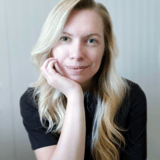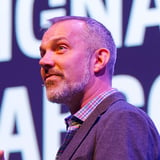Summary
Join Sean Fitzell (User Research Manager), Sarah Han (Sr User Researcher), and Kayla Farrell (Sr User Researcher) as they walk through the process of creating effective and actionable job maps that are used to educate, align, and inspire.
Key Insights
-
•
Compass identified 'Triple D' challenges with scale: duplicated efforts, disjointed workflows, and distance from users.
-
•
They chose to map jobs to be done rather than user journeys to capture agents’ needs beyond product-specific interactions.
-
•
The focus was narrowed initially on the seller-side context due to identified growth opportunities and clearer stakeholder alignment.
-
•
Existing research artifacts were scattered, inconsistent, and often biased by individual experiences or product domains.
-
•
A taxonomy of scenes, jobs, and tasks clarified conversations and helped distinguish stable contexts from changeable actions.
-
•
Collaborative digital whiteboarding (Miro) enabled iterative messy-to-clean synthesis of fragmented research data remotely.
-
•
The jobs map became a 'single source of truth' that helped product teams prioritize by workflows rather than siloed features.
-
•
Maintaining the map is a manual ongoing process involving weekly reviews and monthly stakeholder meetings.
-
•
There is recognition that mapping agent jobs alone isn’t sufficient; understanding clients of agents is an emerging focus.
-
•
Though initial samples were large and varied, survey-based quantification of jobs to be done was smaller and supplemental.
Notable Quotes
"The product team and the product organization are not real estate agents and we don’t speak the same language."
"We started to reference something that became to call the triple D challenges: duplicated efforts, disjointed workflows, and distance from users."
"One workflow might touch five different product areas but from the customer's perspective, it’s just one product."
"We wanted to surface agents day-to-day jobs, not necessarily how they were using Compass products."
"Mapping jobs gives a view into behaviors and needs that may or may not include your solution."
"Agents do a lot of jobs simultaneously with completely different mental contexts."
"We treated the different types of information about jobs as transparency layers, like in an anatomy textbook."
"This jobs map became the single source of truth deliverable anyone in the organization could reference."
"As we grow, it becomes difficult for everyone to deeply engage with research or remain close to users."
"While we love Guy Fieri, we prefer to watch him on Food Network and not experience our own version of Triple D any longer."
Or choose a question:















More Videos

"Please read our code of conduct — even though we’re virtual, we are a community obligated to kindness and respect."
Bria AlexanderOpening Remarks
November 18, 2022

"What we underestimate is that enterprise work is essentially culture change, not just design work."
Ted Booth Sam Ladner Fredrik Matheson Russ UngerDiscussion
June 8, 2016

"The companies that will attract talent moving forward are those that are most flexible and give people choices."
Alla WeinbergWorkers Are Sick of Change: The Cure is Psychological Safety
June 6, 2023

"Having a designated buddy for new hires proactively soliciting questions creates a supported partnership and eases onboarding."
Julie Gitlin Esther RaiceDesign as an Agent of Digital Transformation at JPMC
June 9, 2021

"Cultural and experiential knowledge are greater than institutional knowledge."
Victor UdoewaRadical Participatory Research: Decolonizing Participatory Processes
March 9, 2022

"This is for me an amazing opportunity to see these ideas explored by brilliant people with a wonderful community."
Christian CrumlishIntroduction by our Conference Chair
December 6, 2022

"David Nicholson is our house scribe, a senior UX designer with a passion for enterprise-scale products."
Bria AlexanderDay 2 Welcome
September 24, 2024

"The Red Queen effect means you have no choice but to adapt as others evolve faster."
Simon WardleyMaps and Topographical Intelligence
January 31, 2019

"Cross-departmental cooperation helped redesign playgrounds with features that support early brain development."
Sarah AuslanderIncremental Steps to Drive Radical Innovation in Policy Design
November 18, 2022


















